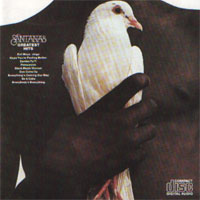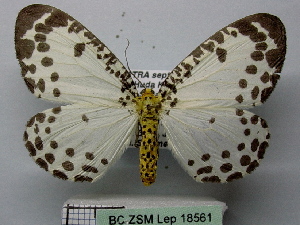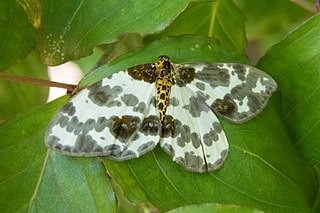
Abraxas is the second studio album by Latin rock band Santana. It was released on September 23, 1970 by Columbia Records and became the band's first album to reach number one in the United States.

Flickr is an American image hosting and video hosting service, as well as an online community, founded in Canada and headquartered in the United States. It was created by Ludicorp in 2004 and was a popular way for amateur and professional photographers to host high-resolution photos. It has changed ownership several times and has been owned by SmugMug since April 20, 2018.

Santana's Greatest Hits is a 1974 compilation album by Santana. It offers highlights from the group's first three albums. It is the band's best-selling compilation album, selling over 7 million copies in the U.S.

Abraxas, the magpie moths, is a genus of moths in the family Geometridae. It was first described by William Elford Leach in 1815.
Abraxas flavimacula is a species of moth belonging to the family Geometridae. It was described by Warren in 1896. It is known from Australia.

Abraxas subhyalinata is a species of moth belonging to the family Geometridae. It was described by Röber in 1891. It is known from Flores and Borneo.
Abraxas intervacuata is a species of moth belonging to the family Geometridae. It was described by Warren in 1896. It is known from Borneo, Java and Sulawesi.

Abraxas invasata is a species of moth belonging to the family Geometridae. It was described by William Warren in 1897. It is known from Borneo.
Abraxas celidota is a nocturnal species of moth belonging to the family Geometridae. It was described by Wehrli in 1931. It is known from western China.
Abraxas intermedia is a species of moth belonging to the family Geometridae. It was described by Warren in 1888. It is known from Subathu in India.
Abraxas capitata is a species of moth belonging to the family Geometridae. It was described by Warren in 1894. It is known from India.
Abraxas paucinotata is a species of moth belonging to the family Geometridae. It was described by Warren in 1894. It is known from Tibet, the Khasi Hills and Darjeeling.
Abraxas metamorpha is a species of moth belonging to the family Geometridae. It was described by Warren in 1893. It is known from Sikkim in India.

Abraxas pantaria, the light magpie or spotted ash looper is a species of moth belonging to the family Geometridae. It was described by Carl Linnaeus in 1767. It is found in the Mediterranean and is common in Portugal and Spain. It is also known from the United Kingdom, Ireland, Croatia, Armenia and Georgia south-eastern Russia and Turkey.

Abraxas suspecta is a species of moth belonging to the family Geometridae. It was described by William Warren in 1894. It is known from China.

Abraxas miranda is a species of moth belonging to the family Geometridae. It was described by Arthur Gardiner Butler in 1878. It is known from Japan.
Abraxas latifasciata is a species of moth belonging to the family Geometridae. It was described by Warren in 1894. It is known from south-eastern Siberia, eastern China and Japan.
Abraxas fulvobasalis is a species of moth belonging to the family Geometridae. It was described by Warren in 1894. It is known from south-eastern Siberia, northern China and Japan.
Abraxas niphonibia is a species of moth belonging to the family Geometridae. It was described by Wehrli in 1935. It is known from Japan, Korea and the Kuriles.
Abraxas flavisinuata is a species of moth belonging to the family Geometridae. It was described by Warren in 1894. It is known from Japan.








